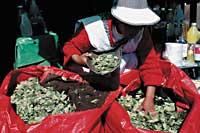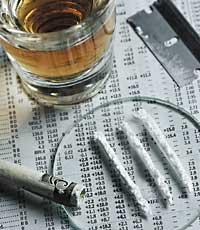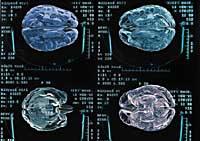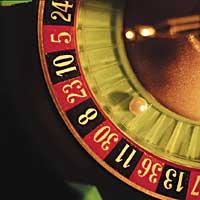At the limit of pleasure and risk

In fact, psychoactive substances, tobacco and alcohol are the most consumed in the Basque Country. They are legal, easily accessible and marketed by powerful international companies.
Other psychoactive substances, on the contrary, are illegal and their consumption and trade is punished. They are generally considered dangerous, although they are not the ones that generate the most problems in the health system. Diseases and social problems resulting from tobacco and alcohol use generate more spending than heroin and cocaine, especially because consumption is much more widespread in society.
Whether legal or illegal, everyone has the capacity to change consciousness, mood or mind. That's why people take them. But not only for that, but sometimes, from a moment on, a psychoactive substance is not ingested by its effects, but by avoiding the situation that generates its lack.
Without him, he cannot live
In fact, psychoactive substances can lead to addiction, and one of the characteristics of addiction is that it feels bad when you stop taking the substance. Discomfort can be psychological or physical and is called withdrawal syndrome.

Another characteristic of dependence is tolerance. Tolerance is defined as the need to take increasing amounts of substances to produce the same effect and, along with withdrawal syndrome, is one of the criteria for diagnosing dependence.
In the international classification of diseases, the World Health Organization (WHO) mentions six criteria. Those who meet at least three of these six are diagnosed as dependent. Tolerance and abstinence syndrome are the easiest to measure biologically, as four others are related in part to knowledge. Two of them are, on the one hand, the passion or enthusiasm for taking the substance and, on the other, the difficulty in controlling consumption.
The other two criteria also include health and social effects, such as the abandonment of other sources of pleasure and fun for substance use, and the persistence of substance intake despite knowing that it is negatively affecting health.
However, addiction is a disturbance caused by psychoactive substances that confuse perceptive, emotional, and motivational brain activities.
Transmission is the key

Formerly, substance addiction was not considered a brain disorder, as were psychiatric and mental illnesses. However, according to the WHO, with the advances of neuroscience it has become clear that it is a brain disorder. Various techniques allow to visualize and measure the changes that occur in brain activity, which allows to demonstrate the effect of psychoactive substances, both at the time of their administration and in the long term.
In the brain communication is transmitted through neurons, the communication center is synapse and the neurotransmitter messenger. Dopamine, serotonin, noradrenaline, GABA, glutamate and endogenous opioids are the most important neurotransmitters related to psychoactive substances. Each key has as its own lock a receiver. When the neurotransmitter binds to the receptor several changes occur in the neuron.
Psychoactive substances affect this level. Some bind to the receptor and work as the body's neurotransmitters. Others act in the opposite way and break the communication between neurons. Substances that are associated with the receptor and increase function are called agonists, while those that prevent it are called antagonists.
For example, nicotine causes the synthesis and release of dopamine; ethanol increases the inhibitory effects of GABA and reduces the excitants of glutamate; cocaine increases the effects of dopamine; ecstasy promotes the release of serotonin and lengthens its effect...

It is evident, therefore, that each substance has its way of acting, so the effect depends on the substance. In general, the most common psychoactive substances are classified as depressants, stimulants, opioids and hallucinogens. For example, alcohol and sedatives are depressants; nicotine, amphetamines, cocaine, and stimulating stasis; heroin and opioid morphine are hallucinogens such as LSD and cannabis.
Fraudulent substances
The tolerance produced by some substances is relatively easy to understand by analyzing the activity of neurotransmitters and receptors. In the case of nicotine, changes in the receptors cause tolerance. Withdrawal syndrome is characterized by irritability, anxiety, bad mood, decreased heart rate and appetite.
However, cannabinoids, despite generating tolerance, hardly produce withdrawal syndrome when they stop taking. With cocaine, for its part, it is not clear that it will produce tolerance, perhaps in the short term. However, the abandonment of cocaine does not produce withdrawal syndrome either.

Therefore, withdrawal syndrome highlights the physical dependence of certain substances. This physical dependence incites further consumption, but not only that explains dependence. If not, how do you understand why the substance is replenished after a long time? And in the case of those who do not produce withdrawal syndrome, what engages these substances? Apparently, the engine is a complex interaction of psychological, neurobiological and social factors.
The brain has special systems to drive behaviors created by vital stimuli for survival. Water, food and members of the other sex activate these systems and there are mechanisms to reward and reinforce the behaviors that lead to drink, food or intercourse, so that we can repeat them.
It seems that psychoactive substances also activate these systems and mechanisms. This theory is also explained in the work that WHO has launched this year on the subject, understanding that the motivation to take the psychoactive substance is so strong. Therefore, these substances deceive the brain and it responds as if they were indispensable for the life of substances and stimuli related to substances. In addition, whenever the substance is taken, the association is reinforced.
Learning processes are of great importance. Through them, stimuli related to the taking of the substance are able to motivate the taking of this substance, that is, the environment, things, incite the consumption of the substance even after a long period of abstinence.
Do genes have the last word?
In addition, researchers have seen that genetics also has to do with the creation of dependency. It has been shown that the tendency to use tobacco is inherited. Genes involved in nicotine metabolism seem to be a major risk factor.
Inheritance has also been studied in alcohol addiction, and in this case, genes that control serotonin GABA and dopamine neurotransmitters and those related to alcohol metabolism are important. The risk of inheriting the dependence of the opóideos can reach 70%.
In view of this, researchers intend to continue studying genes related to the consumption of psychoactive substances. In fact, genetics can help answer many questions and can also be a way to find effective treatments tailored to each person. Of course, not forgetting that in addition to genetic factors many others intervene.
By the brain
Previously, to investigate the incidence of psychoactive substances, laboratory animals were mainly used. Some experiments were dangerous for men and women, and it was not uncommon for the researcher himself to experiment with himself. But technological advances have meant a certain revolution.

With techniques that provide brain images in vivo, you can observe which places in the brain are activated when there are stimuli that cause the desire to take the substance and which places do not normally work after taking the substance.
An example is magnetic resonance imaging. Using magnetic fields and radio waves, accurate images of two or three dimensions of brain structures are obtained. Functional MRI also provides valuable information about brain activity, as it allows comparing oxygenated and oxygen-free blood.
Another important technique is positron emission tomography (PET). This technique allows to visualize the metabolic activity existing in an area of the brain. To do this, a series of radioactive compounds are injected that extend along with the blood and that depending on the degree of radioactivity can determine the activity that develops in different areas of the brain. Thus, blood flow, oxygen and glucose metabolism, or concentrations of substances in tissues are observed in vivo.
Without ingesting any dependent substance

Some behaviors may have effects similar to psychoactive substances. Undoubtedly, there are behaviors that generate great pleasure in people, which is felt when the level of the neurotransmitter dopamine rises in the brain. Some experts therefore believe that some men and women become accustomed to high levels of dopamine and eventually become dependent on this behavior. For example, games, sex, eating, surfing the internet, shopping... can cause revenge by losing control over these activities.
According to UPV psychology professor Enrique Echeburua, ‘drug-free’ addictions and psychoactive substances are very similar. In fact, these activities, initially pleasant, are not carried out later for their satisfaction, but to eliminate the discomfort that generates the lack. In short, psychological addictions are related to the inability to control impulses.
However, other researchers do not consider them dependent, they believe they are another type of alterations. However, much remains to be investigated in this field.





